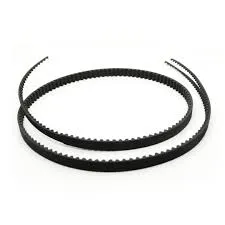- Arabic
- French
- Russian
- Spanish
- Portuguese
- Turkish
- Armenian
- English
- Albanian
- Amharic
- Azerbaijani
- Basque
- Belarusian
- Bengali
- Bosnian
- Bulgarian
- Catalan
- Cebuano
- Corsican
- Croatian
- Czech
- Danish
- Dutch
- Afrikaans
- Esperanto
- Estonian
- Finnish
- Frisian
- Galician
- Georgian
- German
- Greek
- Gujarati
- Haitian Creole
- hausa
- hawaiian
- Hebrew
- Hindi
- Miao
- Hungarian
- Icelandic
- igbo
- Indonesian
- irish
- Italian
- Japanese
- Javanese
- Kannada
- kazakh
- Khmer
- Rwandese
- Korean
- Kurdish
- Kyrgyz
- Lao
- Latin
- Latvian
- Lithuanian
- Luxembourgish
- Macedonian
- Malgashi
- Malay
- Malayalam
- Maltese
- Maori
- Marathi
- Mongolian
- Myanmar
- Nepali
- Norwegian
- Norwegian
- Occitan
- Pashto
- Persian
- Polish
- Punjabi
- Romanian
- Samoan
- Scottish Gaelic
- Serbian
- Sesotho
- Shona
- Sindhi
- Sinhala
- Slovak
- Slovenian
- Somali
- Sundanese
- Swahili
- Swedish
- Tagalog
- Tajik
- Tamil
- Tatar
- Telugu
- Thai
- Turkmen
- Ukrainian
- Urdu
- Uighur
- Uzbek
- Vietnamese
- Welsh
- Bantu
- Yiddish
- Yoruba
- Zulu
Oct . 08, 2024 19:26 Back to list
Understanding the Role of Belts in Motorcycle Performance and Maintenance Techniques
The Role of Belts in Motorcycles An Overview
Motorcycles, celebrated for their agility, speed, and exhilarating riding experience, rely on various mechanical components that contribute to their performance and reliability. One crucial component that often goes unnoticed is the belt. While many might be familiar with traditional chain and shaft drive systems, belt drives have carved a niche in the motorcycle industry, particularly in cruiser and touring models. This article delves into the significance of belts in motorcycles, their advantages, and their applications.
Understanding Belt Drives
Belt drives in motorcycles typically consist of a rubber or composite belt that transfers power from the engine to the rear wheel. This system operates in conjunction with pulleys, which help to guide the belt and provide a seamless transfer of energy. Unlike chains or shafts, belt drives utilize a system of pulleys—one attached to the engine and one to the rear wheel—to facilitate smooth operation.
Advantages of Belt Drives
1. Smooth Operation One of the most significant benefits of belt drives is their smooth operation. The belt absorbs much of the vibrations caused by the engine, resulting in a quieter ride. This characteristic is particularly appreciated in touring motorcycles, where comfort over long distances is paramount.
2. Low Maintenance Belt drives require less maintenance compared to their chain counterparts. While chains need regular lubrication and occasional adjustment, belts are generally maintenance-free aside from periodic inspections. This makes them an attractive option for riders who prefer a hassle-free experience.
belt in motorcycle

3. Durability Modern belts are engineered for durability. They are designed to withstand the various stresses of motorcycle operation, providing longevity without frequent replacements. This durability translates to more extended riding periods and reduced downtime for repairs.
4. Weight Belt drive systems can be lighter than chain drives, which is beneficial for performance and handling. The reduced weight contributes to better fuel efficiency and overall handling of the motorcycle.
5. Aesthetics Visually, belt drives can offer a cleaner look. There are no exposed links or oil splatters that commonly accompany chain drives. Many manufacturers design beautiful housing around the belt system, which adds to the overall aesthetics of the motorcycle.
Applications of Belt Drives
Belt drives are primarily found in cruiser and touring motorcycles. Manufacturers such as Harley-Davidson, Indian, and Victory have integrated belt drives in their offerings due to the comfort and reliability they provide. Additionally, some sport-touring bikes have adopted this technology to enhance the riding experience.
Conclusion
In summary, belts play a vital role in the operation of many motorcycles, offering unique advantages that cater to specific riding styles and preferences. While traditional chain and shaft drives remain popular, the growing appreciation for the benefits of belt drives signifies a shift in motorcycle design philosophy aimed at enhancing rider comfort and reducing maintenance needs. As technology evolves, it will be interesting to see how belt systems continue to develop and influence the motorcycle landscape in the years to come. Whether you're a casual rider or a long-distance traveler, understanding the role of belts in motorcycles can enhance your appreciation for this exciting sport.
-
Korean Auto Parts Timing Belt 24312-37500 For Hyundai/Kia
NewsMar.07,2025
-
7PK2300 90916-T2024 RIBBED BELT POLY V BELT PK BELT
NewsMar.07,2025
-
Chinese Auto Belt Factory 310-2M-22 For BMW/Mercedes-Benz
NewsMar.07,2025
-
Chinese Auto Belt Factory 310-2M-22 For BMW/Mercedes-Benz
NewsMar.07,2025
-
90916-02660 PK Belt 6PK1680 For Toyota
NewsMar.07,2025
-
drive belt serpentine belt
NewsMar.07,2025

